Booksource Book Club invites you to read along with us. This month us book nerds gathered around to talk about Sisters by Raina Telgemeier and Sunny Side Up by Jennifer L. Holm and Matthew Holm. Find our discussion below. Now we want you to join in the fun! Please join the conversation by commenting with your thoughts.
Brandi: I know this is a few people’s first graphic novel. Any initial thoughts for those new to the genre?
Julie A: I knew this from putting graphic novels on reluctant reader lists, but I was surprised by how fast it went. I was worried about reading pictures and words together, but it was easier than I thought.
Michelle: It was kind of like a subtitled film where you have to split your attention and sometimes have to go back and look at the pictures.
Melissa: I was hoping these books would win me over, and while I did love the stories, it didn’t happen.
Michelle: What was missing for you?
Melissa: Maybe it was that I was trying to get through them quickly so I didn’t pay so much attention to the pictures, or maybe I’m not much of a visual person. Even though the images added a layer of depth to the story, printed words do something different for me. Maybe it’s just the way my brain processes.
Sean: I’ve recently been getting into graphic novels and these are totally different from the ones I’ve been reading – like Scott Pilgrim, with swords and lots of action. This was a definite change of pace.
Brandi: Right, one’s realistic fiction and the other’s a memoir so there isn’t going to be a quest.
Michelle: When you don’t have a lot of experience with graphic novels or only have experience with one type, it’s hard to think of how you can tell realistic stories in this format. You’re used to more fantastical stories in comics. I think both authors use the format well. Raina Telgemeier is such a good storyteller with so much depth and very little text. For me the pictures tell 75% of the story.
Emma: I really like the sepia tone for the flashbacks; it’s something I haven’t seen before.
Julie A: I think the sepia tone would have been really helpful in Sunny Side Up when they kept changing the setting. I read that one first and I 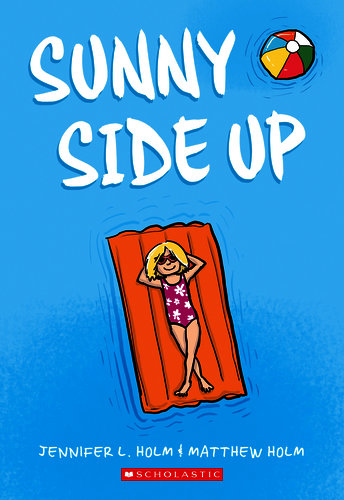 wondered how I was going to keep track of it all. I had to keep flipping back to figure out what month she went back to. I appreciated the sepia tone in Sisters.
wondered how I was going to keep track of it all. I had to keep flipping back to figure out what month she went back to. I appreciated the sepia tone in Sisters.
Sean: Speaking of the flashbacks in Sunny Side Up, I wanted more clarity out of the storyline with the brother so I could evaluate how badly the brother was actually doing.
Brandi: Did you read the author’s note at the end of Sunny Side Up? I didn’t realize that Jennifer and Matthew were brother and sister, and they said it was actually based on events from their childhood. I did like that it was kind of vague in that child’s understanding of what addiction is.
Melissa: I think it needed to be vague given the audience. I think the vagueness of Sunny exploring her feelings and not wanting to pretend she was okay with what was happening were intentional.
Brandi: I like that this was reflected in her reaction to the grandfather smoking cigarettes.
Michelle: What’s the interest level of Sunny Side Up? Is it too young given the subject matter?
Melissa: Grades 3-6. I think it’s appropriate.
Emma: I made a text-to-text connection with this book and In Her Shoes by Jennifer Weiner. The younger sister goes to the old folks’ community to live with her long lost grandmother and it’s my dream to do that because old people are so fun!
Melissa: I thought it was very sweet. I read Sisters first, but I definitely connected with Sunny Side Up more. They showed so much about the character Sunny, her difficulty in accepting that things were different than they actually are, and that she at first resented going to her grandfather’s and then eventually they develop a bond. I went on an emotional journey with her through the story.
Erin: I actually cried and I was really surprised by this. I loved it so much. I just felt really hard for Sunny when she was decided that she wasn’t going to pretend anymore. I just kept thinking how hard that must have been for her going from idolizing her older brother to having him turn on her. I totally connected to that devastation. When it was revealed in the end it all I just felt all the feelings.
Melissa: When she talks about the things that she didn’t want to pretend to be okay with anymore, like her brother’s drugs, her grandfather’s cigarettes, even with the squeaky bed, you wonder where the line is between not saying something because it’s impolite or saying something because you need to. Even as adults, where do we draw the line? I thought that was an interesting social commentary.
Brandi: But there are families out there that do ignore the big stuff and pretend that everything is okay. I like the connection to the comic books and how she connected more to Spider-Man, Batman, or her favorite, Swamp Thing, even when her friend tried to push her more toward Wonder Woman.
Melissa: And when they played she pretended to be Batman. Her friend said, “You’re more of a sidekick.” And she was like, “I’m the one who had the tuna idea to find the cats. I’m not a sidekick.”
Brandi: Yeah, Swamp Thing was her favorite because he doesn’t wear a mask; he’s not pretending.
Kerry: That’s right. She couldn’t get over the Hulk because she kept wondering, “What is he?”
Katy: The Hulk reminded her of her brother when he was influenced by substances.
Melissa: This is really making me appreciate the book a lot more.
Julie & Sean: Both of these books had a lot of connections to comics.
Brandi: I think what’s interesting about these two books is that they’re both written by female authors and they’re working in a format that has been traditionally populated by men, but they both loved comics as kids. They’re making graphic novels that are more targeted to a female audience, or at least less gender-specific one, and I love that.
Julie A: I’m like Melissa in that I like words on a page and a really good turn of phrase. I love language in that way, but one time I appreciated the pictures more than words was when the family in Sunny Side Up was all at dinner and talking about Pompeii. There was this one happy moment and then one frame with no dialogue on it and they’re shown petrified like the people in Pompeii. It was such a layered picture: sad, tragic and hopeful because she wants to save this moment.
Katy: You don’t have to spell things out and you don’t have to put so much description because of the pictures. I like that there’s a book at this interest level about addiction, because even adults don’t understand it and it’s nice to put it on a level where even children can understand it better.
Erin: The images showed the progression of the problem, but you really had to read the pictures to understand that he was progressively getting worse in his addiction.
Melissa: When we’re first introduced to him at the pool are we to assume that there wasn’t an issue?
Julie A: At the pool he just wants to have fun with his sister and it’s totally innocent, but at the same time he didn’t want to follow the rules. It maybe is a tiny bit of foreshadowing that he’s a rebel.
Erin: I didn’t see it as him being a rebel as much as I saw it as a brother and sister moment where they have this connection. Sunny really loves her brother and everyone was having fun playing Marco Polo when it was adult swim time. It sets up the scene when she’s trying to decide if she should tell her mom about the bag of drugs because it may just be a cool thing to do, like when he let her drive the car.
Brandi: The sibling relationship in Sunny Side Up is so different from Sisters. Sisters seemed more reflective of my relationship with my sisters because we’re very different and not that close.
Diona: They at least had a connection with their art and were able to take a moment to reflect on that and bond towards the end. When my sister and I got older, we found that we actually have a lot in common, but we hated each other so much growing up.
Brandi: The snake incident could have actually happened with my sisters and me.
Melissa: Is Smile related to Sisters?
Sean: There’s some overlap. At the end of Smile you see “we did some road tripping over the summer” which foreshadows Sisters. I think Sisters might allude to a book in the series about the parents’ divorce.
Brandi: I like how Raina was oblivious to her parents’ situation and Amara was the sensitive one saying, “Mom and Dad haven’t liked each other for a while.”
Melissa: That’s just like real world families and personalities. Some people just pick up on things better.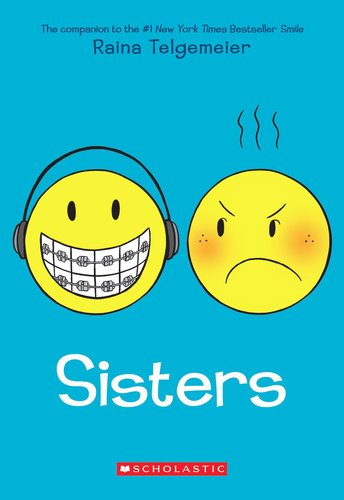
Michelle: Especially because Raina is older and more distracted and wears her headphones.
Brandi: She’s also just being a pre-teen and defining herself separate from her family and parents.
Sean: I didn’t like Sisters as much as Smile, I don’t think.
Michelle: Me either.
Kerry: Same here. I loved Smile so much. I thought it was hilarious.
Michelle: Was there a reason? Can you point to something missing?
Kerry: I think Smile was more humorous than Sisters. I liked Sisters a lot, but I was hoping for a happy ending. I wanted them to become best friends. Smile wasn’t so much about the sister relationship.
Melissa: I agree there wasn’t much resolution at the end of Sisters.
Erin: But it’s a memoir and memoirs don’t really come together cleanly.
Julie A: I think there is kind of a quiet resolution when they’re sitting together outside on the stoop when they’re both feeling a little alienated and Raina lets Amara use her colored pencils.
Brandi: I love how terrible her make up looked in that scene.
Sean: Raina’s illustrations captured the time period really well with the make-up, the hairstyles, the clothing and the objects in the background. Her attention to detail brings you back to the early ‘90s.
Emma: When I was a kid, I read all of these Archie comics that were my uncles’ and they took place in the ‘70s but that timeframe didn’t throw me. But I don’t know if students really would notice that detail because of how different technology is today.
Melissa: I understand that the parents were trying to spend some time apart, but I think it seemed unfair that they were taking this awful road trip while the dad was flying.
Kerry: Mom probably had this grand idea about a road trip and camping that didn’t pan out as planned. I loved that the mom finally had her moment of explosion towards the end too.
Michelle: I just really like the way Raina draws; the expressions, you just know what everyone’s feeling. She just gets so much expression in a two-dimensional drawing.
Brandi: Both drawing styles are very clean; I’ve abandoned Watchmen a few times because there’s so much detail. It’s very scribbly and it’s hard to understand all of the details, but these were really clean.
Sean: Graphic novels play with your eyes and nod to lots of other visual media. Sisters really does that, it makes you want to analyze each frame to see all the layers. That’s why it was my favorite of the two.
Erin: Maybe I’m not as familiar with the graphic novel genre, but I feel that Sunny Side Up has more layers narratively and that’s probably why I would pick Sunny Side Up as my favorite. To me there was more emotion, more feeling, more narrative depth vs. visual depth.
Sean: The little touches like the historically accurate license plates are what make me appreciate Sisters. Totally unrelated, but I love how graphic novels smell. The ink has a different scent than other books.
Melissa: Thank you for making me read graphic novels. It’s probably something I wouldn’t have done otherwise. I appreciate that they were fast reads because I don’t always have time read a full book.
Julie A: I felt like I got a taste of what a reluctant reader feels like, because I picked it up and thought, “I don’t know if I want to do this.” And then as soon as I was done, I was like, “I read one. I did it!” And that’s how it feels to accomplish something you didn’t think you really wanted to do.
Melissa: So what’s up for next time?


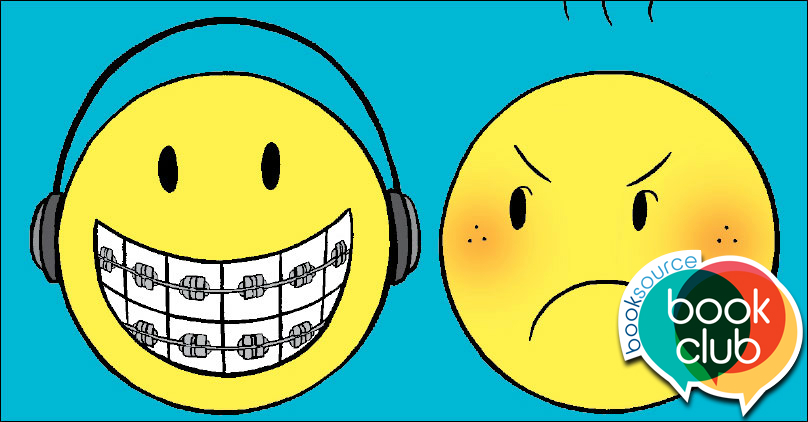
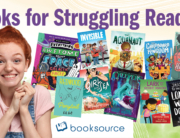
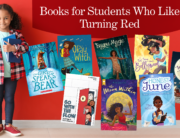
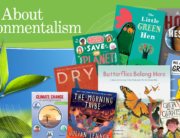
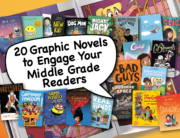
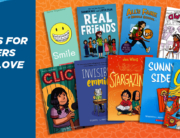
Leave A Comment